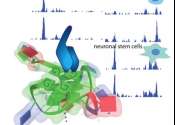Discovering new drugs, inspired by Darwinian theory
The body must constantly defend itself against bacteria and viruses. It generates millions of different antibodies, which are selected to recognize the enemy and trigger the best possible immune response. Scientists use these ...









